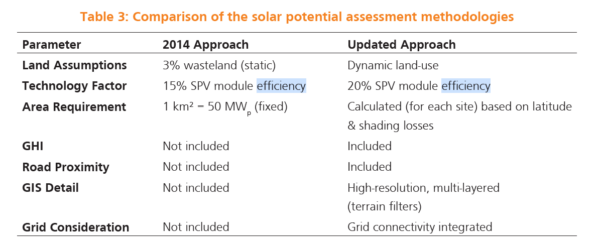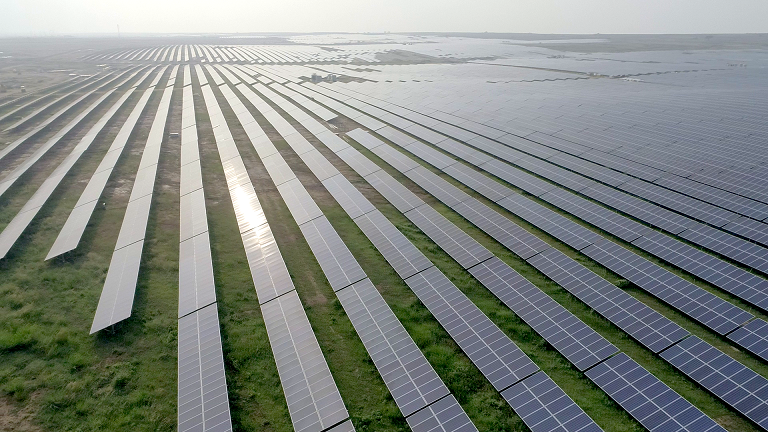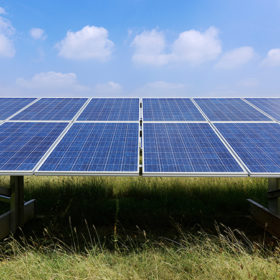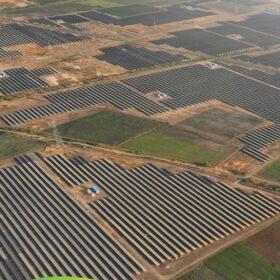India has an estimated 3,343 GWp of deployable ground-mounted solar PV potential (DC capacity), significantly higher than the 2014 estimate of total solar potential of 748.98 GWp, according to a new comprehensive study by the National Institute of Solar Energy (NISE). This updated figure is based on an analysis of 27,571 km² of technically feasible land — about 6.69% of the country’s total identified wasteland area (412,458.37 km²). This aligns with the imposed guideline that no more than 10% of a state’s wasteland be used for solar deployment.
“The substantial increase in potential area and in estimated capacity compared to the 2014 assessment (706.15 GW, ground-mounted) reflects improvements in data resolution, land-use mapping, and advances in solar technology efficiencies. The assessment methodology integrates high-resolution geospatial datasets, satellite-derived solar irradiance maps, land-use and land-cover information, slope and topography constraints, and proximity to transmission infrastructure,” states the report.
After identifying all technically feasible regions for ground-mounted solar installations, the potential capacity was calculated by factoring in shadow-free deployable area and key technological parameters, including module wattage (545 W), module efficiency (20%), and module area (2.6 m²). Additionally, the analysis incorporates a shadow assessment conducted to optimize the utilization of available space for solar panel installation.

Based on analysis, the study finds that ground-mounted solar potential is very well spread all over India. Apart from the well-known regions of Rajasthan, Maharashtra, and Gujarat due to availability of vast wastelands, and high irradiance, a large number of other states also show significant capacity owing to favorable solar geometry and land-use efficiency.
Northeastern and Himalayan states have limited potential due to rugged terrain, forest cover, and/or lower irradiance; however, even small states and union territories exhibit high potential density suitable for compact projects.
Overall, top 3 states by ground-mounted solar potential are Rajasthan (828.78 GW), Maharashtra (486.68 GW) and Madhya Pradesh (318.97 GW).
Western India, led by Rajasthan (828.78 GW), Maharashtra (486.68 GW), and Gujarat (243.22 GW), contributes over 45% of the national potential. These states benefit from vast, contiguous wasteland and high solar irradiance.
Southern states including Andhra Pradesh (299.31 GW), Karnataka (223.28 GW), Tamil Nadu (204.77 GW), and Telangana (140.45 GW) show significant contributions despite moderate wasteland area. This is attributed to favorable solar geometry, dense irradiance levels, and high land-use efficiency.
Northeastern and Himalayan states such as Nagaland, Mizoram, Arunachal Pradesh, and Uttarakhand present low ground-mounted potential due to lower solar irradiance, rugged terrain and high forest cover, and scattered, less-accessible wastelands.
This content is protected by copyright and may not be reused. If you want to cooperate with us and would like to reuse some of our content, please contact: editors@pv-magazine.com.









The recent report on India’s big potential of up to 3,343 GWp of deployable ground-mounted solar PV potential is good news. It is from around 7% of wasteland area. In this, the Western region is ahead and followed by the South to some extent. This augurs well for the country’s focus on green energy.